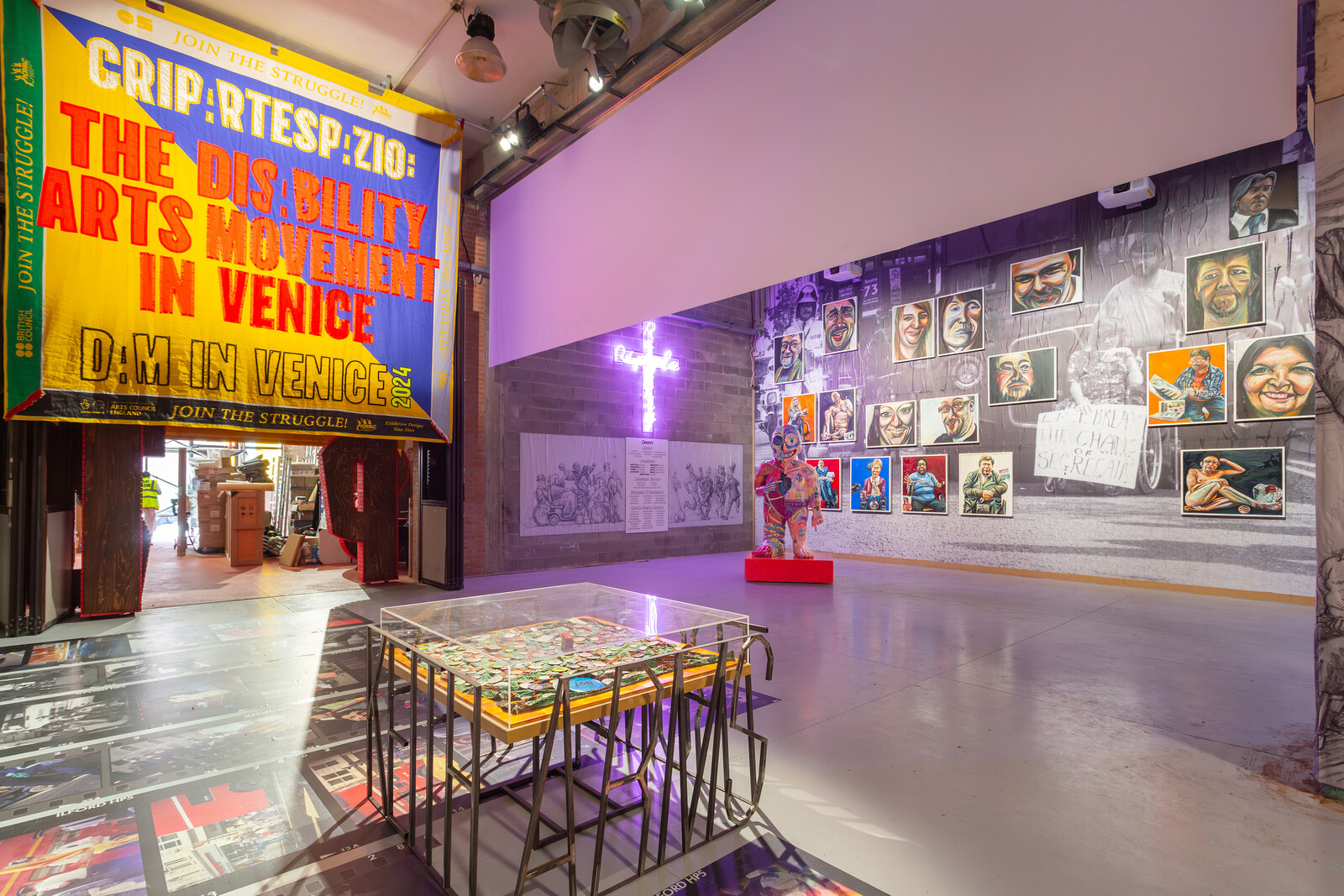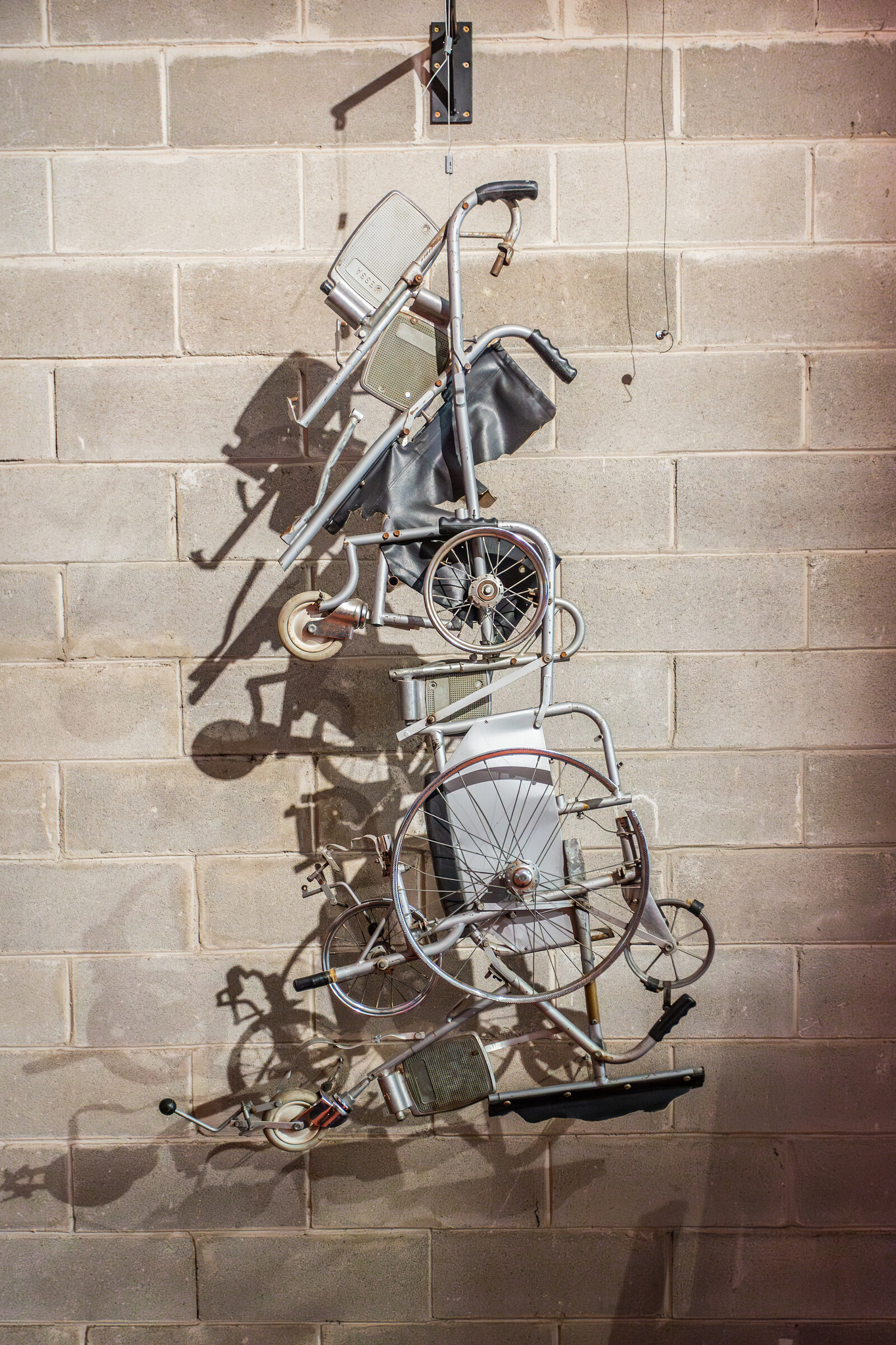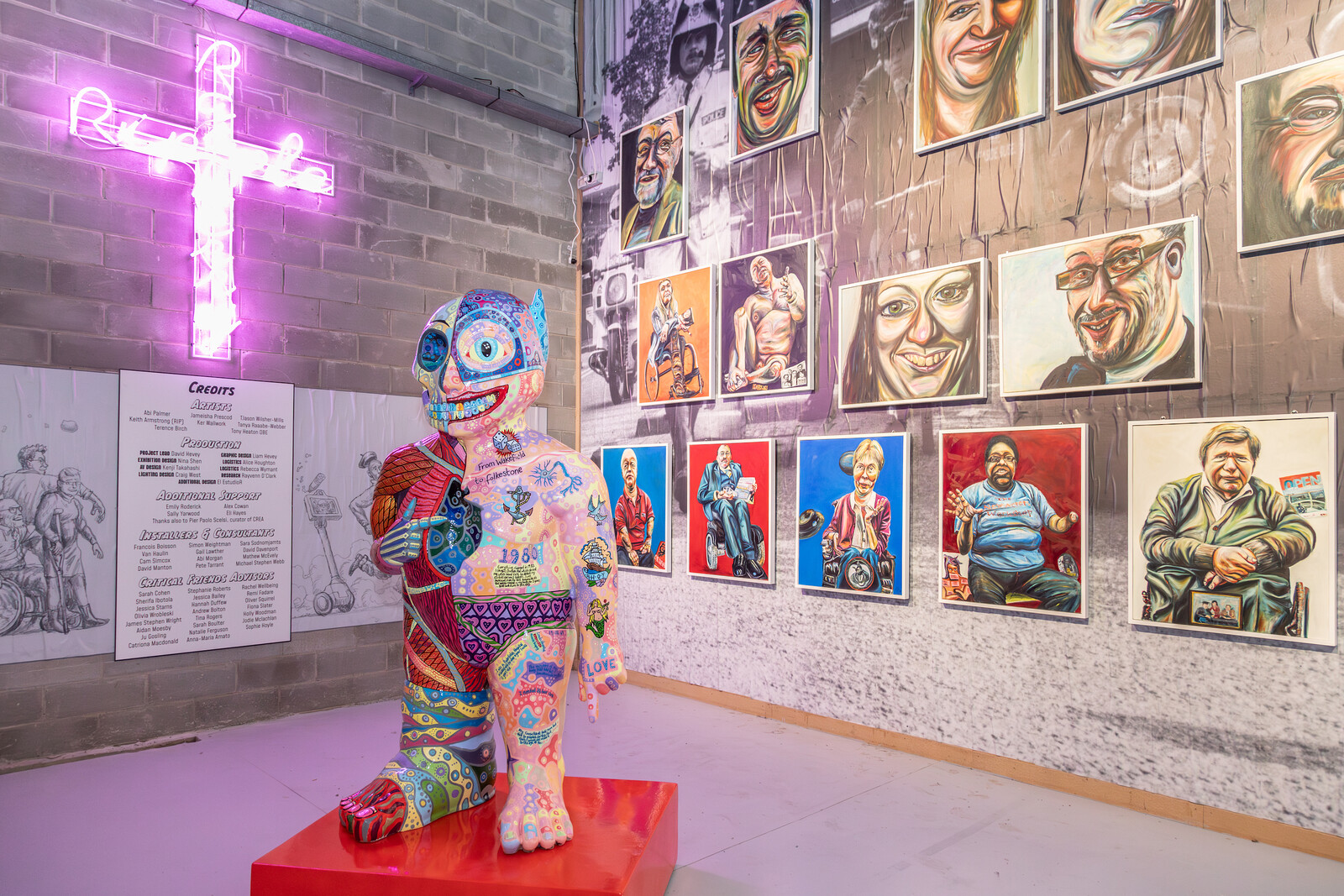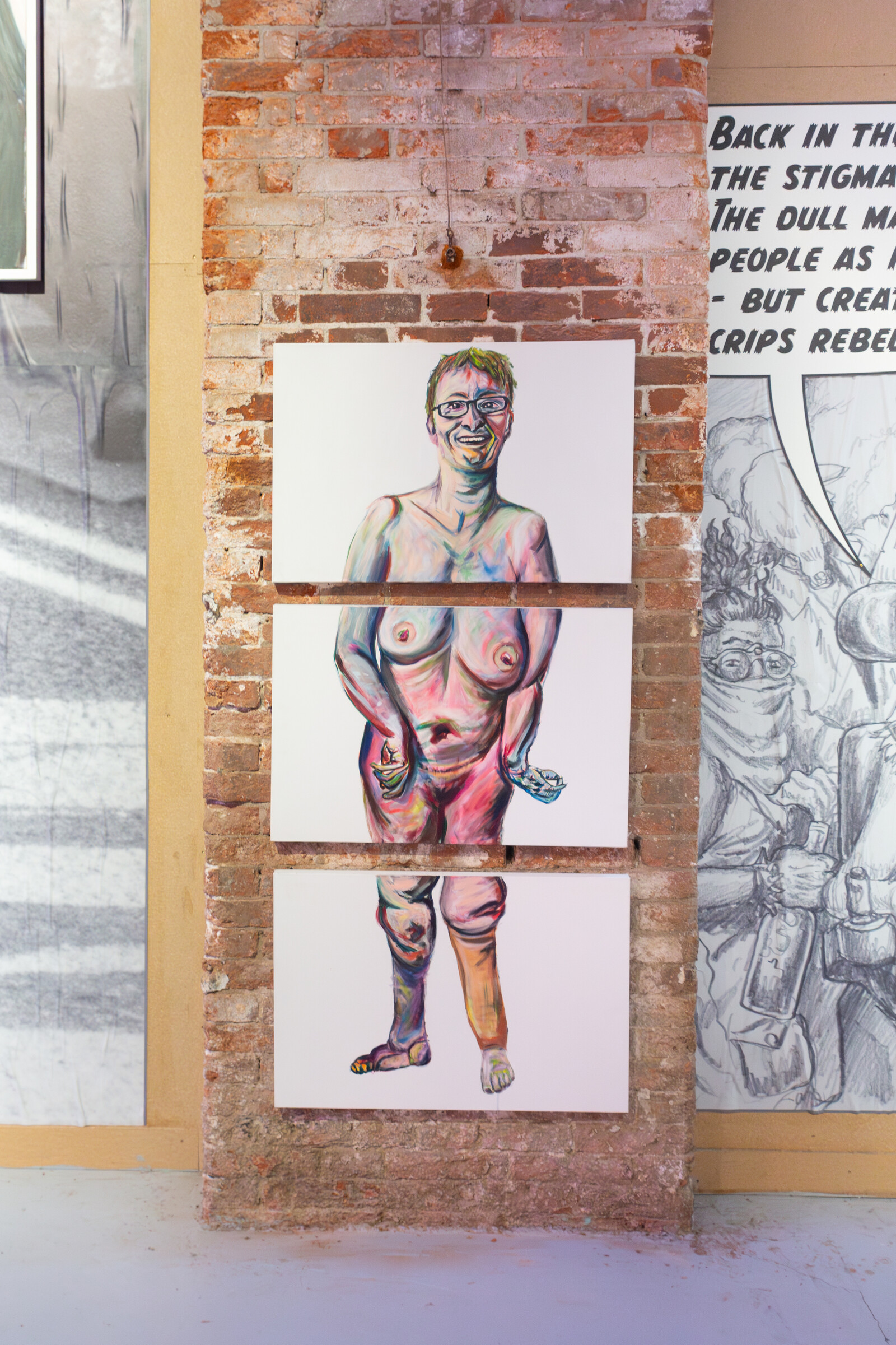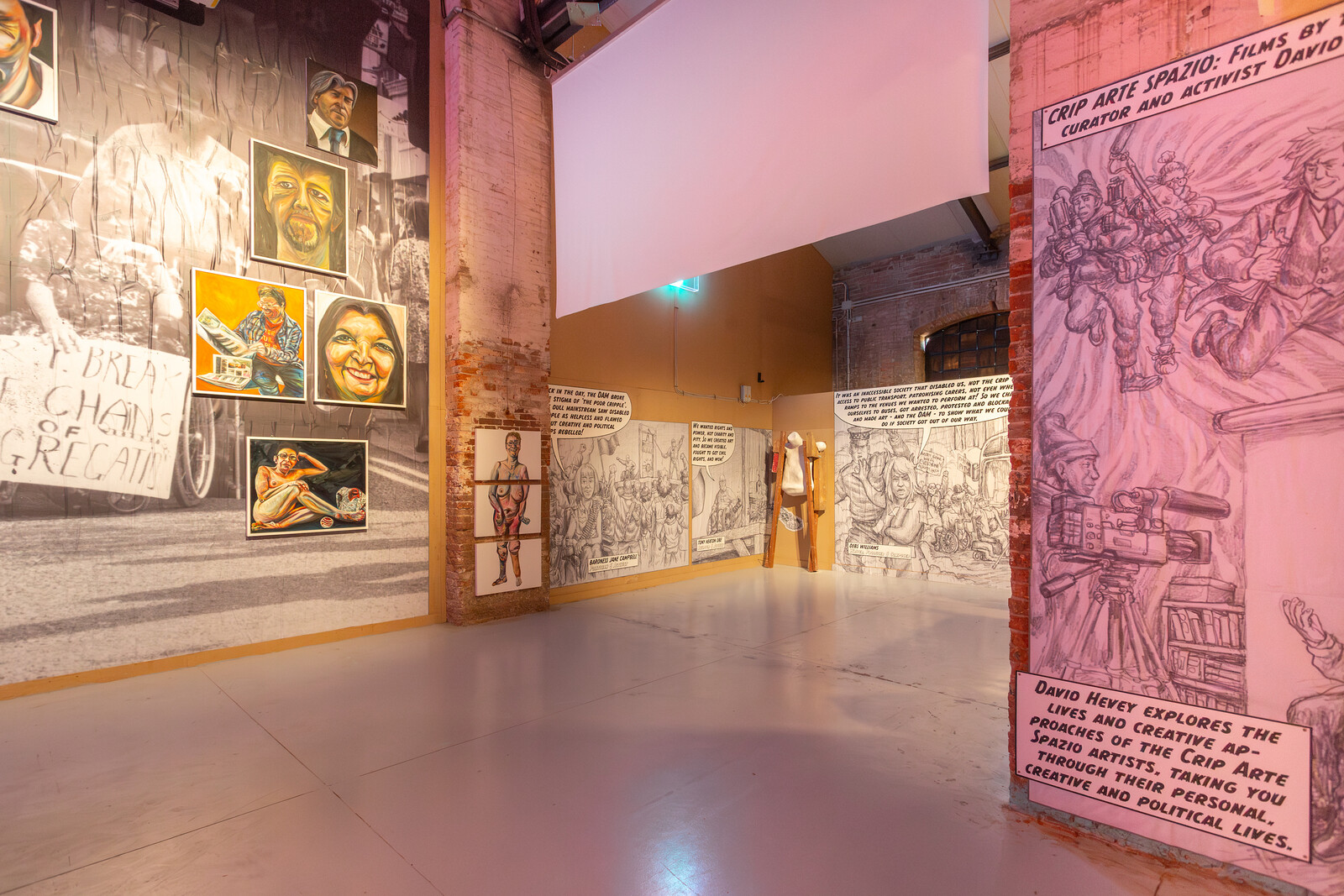The past few years have seen more disability-themed art exhibitions staged worldwide. The majority of these exhibitions, most notably “Crip Time” (Museum für Moderne Kunst, Frankfurt am Main), included both disabled and non-disabled artists and were curated by non-disabled curators, resulting in a medicalized focus with a lack of historical context. It seems a recent emphasis on exhibits focusing on “the body,” first prompted by an academic interest in transhumanism, and then perhaps primed by Covid-19, have led to a co-opting, of sorts, of disability for disability or disability-adjacent exhibitions.
Now, “Crip Arte Spazio: The Disability Arts Movement in Venice“ changes this trajectory. The exhibit focuses on the UK Disability Arts Movement (DAM)—its history and its contemporary progeny. The exhibit is curated by David Hevey, the CEO of Shape Arts, the UK disability-led arts organization and producer of “DAM in Venice.”
This transformation of perspective is clear even before entering the exhibit. Parked outside—and lifted front first to a forty-five degree angle—is Gold Lamé (2014), sculptor Tony Heaton’s refashioned National Health Service (NHS) Invacar. Heaton, perhaps the best known of the DAM artists, encases in gold what was a blue vehicle given by the state health service to disabled drivers, a playful transmutation not only of a stigmatized vehicle but also of the pitiful “lame” to the more stylish “lamé,” while at the same time gesturing to his personal history of being hit by a car when he was a teen.
In the exhibit’s introductory hallway, Heaton’s Great Britain from a Wheelchair (1994/95), a map of the island of Britain built from two NHS-issue wheelchairs, shows how DAM artists create their work from actual lived circumstances. Like persistent political action, art can transform, if not the world, then how those of us with disabilities are viewed and treated. Great Britain from a Wheelchair insists disabled people are part of what comprises a nation.
In the main exhibit space, the difference from recent disability-focused exhibits is startling and joyous. Instead of the preponderance of white walls, “DAM in Venice” takes place on what could be a stage set for a raucous political demonstration. Keith Armstrong’s historical photographs of disability rights protests line the walls and tumble onto the floor. DAM, which began in the 1970s, was, as stated in the graphic novel-like brochure/guide, “a coalition of crips who fought barriers, helped changed the law, and made great art about those struggles.”
DAM art is not art for art’s sake. The art is inextricably connected to the disability rights movement, which “broke the stigma of ‘the poor cripple.’” The art moves us away from the focus on the body and impairment inherent in the medical model of disability to the inaccessible society in which physical and attitudinal barriers are the cause of disablement.
Other works by DAM pioneers are featured. Across from Armstrong’s photographs is a wall of twenty paintings from Tanya Raabe-Webber’s “Who’s Who” (2007) series of colorful, lively portraits of leaders of DAM and the UK disability rights movement. Next to this display is Self Portrait Triptych (2011), in which Raabe-Webber uses horizontal panels rather than the usual vertical format, showing her body being made up of the same parts as a non-disabled woman, though perhaps in a different combination.
The exhibit movingly reaches into the present with Abi Palmer’s four-part video installation Abi Palmer Invents the Weather (2023), a response to COVID isolation. The four videos (“Light,” “Heat,” “Rain,” and “Fog”) follow a seasonal progression. Palmer, under the watchful eyes of her cats Cha-U-Kao and Lola-Lola, creates cardboard dioramas, artworks in their own right, as Palmer’s voiceover narrates a lyrical text highlighting both her process and thoughts, which never veer toward sentimentality.
The epiphany of Abi Palmer Invents the Weather is in “Rain,” when the artist creates her own raincloud from the fermentation of ”small specks of dirt, fallen leaves, mushrooms, lichen, collecting rain from the drips on the balcony overhang,” and cheesecloth. Palmer narrates: “I want you to feel freshness. We already know too much about stagnation.” But Palmer wonders if it is “a bad omen bringing the sky inside like this.”
Rejecting the history of silencing black voices, Jameisha Prescod’s video On Black Pain (2022) juxtaposes slave traders’ claim that Black slaves could not feel pain with contemporary doctors who ignore what Black patients tell them. Prescod includes and acknowledges the words of other Black disabled people in the video. (Unfortunately, though Raabe-Webber’s “Who’s Who” includes a diverse array of portraits, Prescod is the only BIPOC artist in the exhibit.)
In Ker Wallwork’s Merg (2021), a computer screen types out, word-by-word, a situation dreaded by the many disabled people who depend on government benefits. Caught in the era of austerity by a dehumanizing bureaucracy, Wallwork reimagines a government benefit letter as a nightmare in which, after waking, “eventually a social worker crawled out of the woodwork.” This is “like seeing a dodo or a floppy disk,” the screen types, “If wolves are being reintroduced to Scotland perhaps social workers are being reintroduced to England.” The social worker misnames and misgenders Merg as Maeve, then tells them to find a job.
“DAM in Venice,” runs parallel to the Biennale, which, despite its theme of “Foreigners Everywhere” includes few self-identified disabled artists. “DAM in Venice” both highlights and begins to rectify this glaring omission, while changing the prevalent medicalized art world narrative of disability and disability history.
